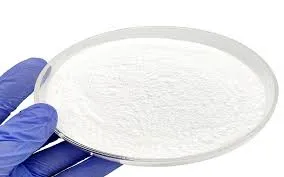Chemicals Used in Wastewater Treatment Plants
Wastewater treatment is an essential process that ensures the protection of public health and the environment by removing pollutants from water before it is released back into natural water bodies or reused. Throughout this intricate process, various chemicals are utilized to facilitate the treatment stages, enhance efficiency, and achieve compliance with regulatory standards. This article explores some of the most common chemicals employed in wastewater treatment plants.
Coagulants and Flocculants
One of the primary challenges in wastewater treatment is the removal of suspended solids and colloidal particles. Coagulants are chemical agents that facilitate the aggregation of these particles into larger masses, known as flocs, which can then be easily removed from the water. Common coagulants include aluminum sulfate (alum) and ferric chloride. These chemicals work by neutralizing the electric charges on particles, allowing them to come together and form flocs.
Following the coagulation process, flocculants are often added to further encourage the aggregation of particles. These long-chain polymers enhance the size and strength of the flocs, making them easier to separate during sedimentation or filtration. Polyacrylamides are widely used flocculants in wastewater treatment.
pH Adjusters
The pH of wastewater can significantly influence the effectiveness of certain treatment processes, such as coagulation and disinfection. Therefore, it is often necessary to adjust the pH to optimize these processes. Chemicals such as lime (calcium hydroxide) and sulfuric acid are frequently used as pH adjusters. Lime raises the pH level, making the water more alkaline, while sulfuric acid lowers the pH, making it more acidic. Maintaining an optimal pH range is crucial for enhancing chemical reactions and ensuring the stability of various treatment methods.
Disinfectants
what chemicals are used in wastewater treatment plants

After the removal of solids and organic materials, it is essential to disinfect the treated water to eliminate pathogens before its release. Chlorine is one of the most common disinfectants used in wastewater treatment. It is effective in killing bacteria, viruses, and other harmful microorganisms. However, the use of chlorine can lead to the formation of harmful by-products, such as trihalomethanes (THMs). Therefore, some treatment plants opt for alternative disinfectants, such as ultraviolet (UV) light or ozone, which do not produce harmful by-products and are increasingly favored for their effectiveness and environmental safety.
Nutrient Removal Chemicals
Excessive nutrients, particularly nitrogen and phosphorus, present in wastewater can lead to eutrophication in receiving water bodies, resulting in algal blooms and depletion of oxygen levels in the water. To mitigate this, chemical processes are used to remove these nutrients. For nitrogen removal, chemicals like sodium nitrate or ammonium sulfate may be used in conjunction with biological treatment methods. In phosphorus removal, aluminum sulfate or ferric chloride is often added to precipitate phosphorus as part of the treatment process.
Odor Control Agents
Wastewater treatment plants can generate unpleasant odors, which may be a nuisance to nearby communities. To manage and mitigate these odors, various chemicals are employed, including activated carbon, calcium nitrate, and hydrogen peroxide. These chemicals can neutralize odors by reacting with sulfur compounds and other odor-producing agents, thereby improving air quality around treatment facilities.
Conclusion
The utilization of chemicals in wastewater treatment plants is critical to achieving effective treatment outcomes and protecting public health. From coagulants and disinfectants to pH adjusters and nutrient removal agents, each chemical plays a vital role in the overall treatment process. As technology advances and regulatory requirements evolve, wastewater treatment plants continue to adapt and innovate in their use of chemicals, ensuring the sustainability and safety of water resources for future generations. By understanding the role of these chemicals, we can better appreciate the complexity and importance of wastewater treatment processes in maintaining environmental health.

